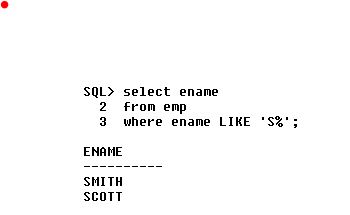- IS NULL
- IS NOT NULL
NOTES:
- The NULL conditions includes the IS NULL condition and IS NOT NULL conditions.
- The IS NULL conditions tests for nulls.
- A null value means the value is unavailable, unassigned, unknown or inapplicable. (null and zero both are different)
- Therefore, you cannot test with = because a null cannot be equal or unequal to any value.
Example:
The above example retrieves the last names and managers of all employees who do not have a manager.
Example:
To retrieve the names, salary of employees who don't receive commission we can write the query like:
Example:
The above example shows the name,sal and commission of employees who commission is not null, i.e.
the employee receives commission, it may be zero but not null.
So, remember: null and zero both are different.







